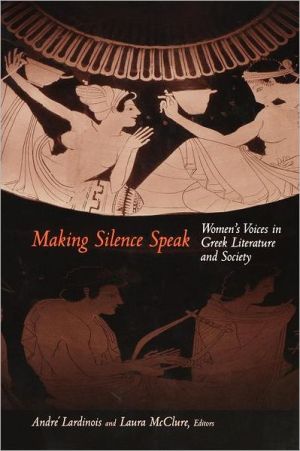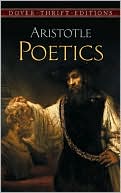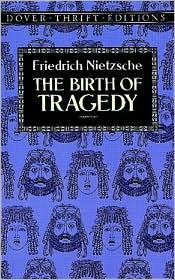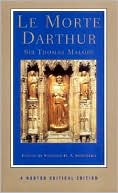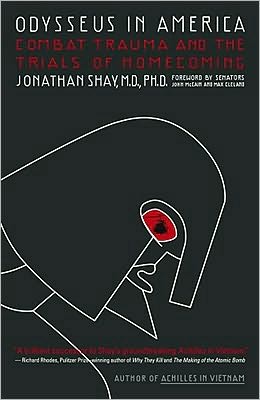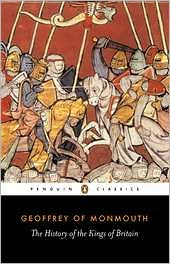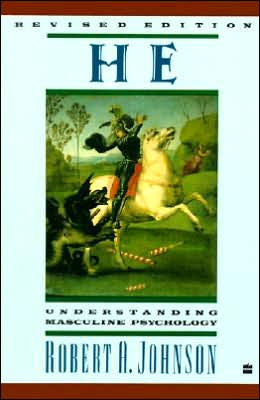Making Silence Speak: Women's Voices in Greek Literature and Society
This collection attempts to recover the voices of women in antiquity from a variety of perspectives: how they spoke, where they could be heard, and how their speech was adopted in literature and public discourse. Rather than confirming the old model of binary oppositions in which women's speech was viewed as insignificant and subordinate to male discourse, these essays reveal a dynamic and potentially explosive interrelation between women's speech and the realm of literary production,...
Search in google:
"There is no other collection that approaches the issue of women's voices in antiquity from such a broad perspective. Making Silence Speak will interest classicists and nonspecialists alike."--Froma I. Zeitlin, Princeton University"An important and interesting collection that supports its claim that women's speech is not 'separate from and subordinate to male discourse,' but rather interrelated with it. This volume contains something of value for practically every Hellenist, and the individual pieces complement one another in a variety of suggestive ways."--Sarah T. Mace, Union CollegeMonica S. Cyrino - Religious Studies Quarterly[A] brilliant and comprehensive collection of essays . . . one which will be of great interest to classicists and non-specialists alike.
\ \ \ \ Chapter One\ \ \ Introduction\ By LAURA McCLURE\ \ \ THE STUDY of status of women and the social construction of gender in the ancient world has had a substantial impact on the field of classical studies since the mid-1970s, although its roots extend back to the late nineteenth century.1 An increasingly important part of this project has been the study of women's speech and its political and social implications as represented in male-authored texts. Equally critical to the understanding of ancient women has been a new body of work devoted to the question of female subjectivity in both archaic and Hellenistic women poets. While these individual areas have raised the issue of women's speech and its representations, there has been no single sustained study that provides a comprehensive perspective on a variety of sources from diverse historical periods. This collection seeks to fill that gap by offering a wide range of interpretations of women's voices found in both familiar and lesser-known ancient texts. The term "voice" is deliberately broad: it includes not only the few remaining genuine women's voices but also the ways in which male authors render women's speech and the social assumptions such representations reflect and reinforce. This collection, therefore, does not simply attempt to recover the voices of actual ancient women, although that is certainly one of its goals; it also explores how fictional female voices can serve to negotiate complex political, epistemological, and aesthetic issues.2\ Several ancient Greek sources suggest that men understood women to speakdifferently.Aristophanes offers two well-known examples in his Thesmophoriazusae and Ecclesiazusae, two comedies that hinge on scenes of cross-dressing and verbal impersonation. In the Thesmophoriazusae, a play produced in Athens around 411 B.C.E., the tragic poet Euripides asks his relative, Mnesilochus, to infiltrate the women's celebration of the Thesmophoria and to defend him against charges of slandering women in the theater. The Relative eventually agrees to this scheme, allowing himself to be depilated and dressed as a woman. Once disguised, Euripides enjoins him to speak like a woman (Ar. Thesm. 267-68). Presumably he refers not to the pitch of the voice, but to the oaths, case endings, and other linguistic features appropriate to women's speech, an interpretation confirmed by the Relative's impudent reply: "Not by Apollo, unless you swear to . . . " (Ar. Thesm. 269). In swearing by a male deity, the Relative comically undermines Euripides' injunction.3 When the tragic poet agrees to rescue him should their plan go awry, the Relative adopts the appropriate markers of female speech, referring to himself with feminine participles . . . . Much of the humor of the play's subsequent scenes derives from the fact that the Relative cannot fully maintain his female persona: his use of scatalogical obscenity and confusion of gender pronouns in the escape scene continually hint at his masculine identity.\ Aristophanes' Ecclesiazusae, produced at the beginning of the fourth century B.C.E., similarly features a scene of cross-dressing: Athenian matrons disguise themselves as men in order to gain access to a masculine civic space, the Assembly, where they put forward their proposal to take control of the government. In the first part of the play, the women gather in their husbands' clothes to rehearse their parts as rural members of the Assembly. Their leader, Praxagora, guides their rehearsal, exhorting them to speak like men (Ar. Eccl. 149-50). She refers not merely to the conventional grammatical markers of male speech such as case endings, forms of address, and oaths, but also to the male declamatory practices of the Assembly that would have accompanied the holding of the staff and the wearing of the speaker's garland.4 The inaccuracies revealed by the matrons' impersonation of male speech indicate what the Athenian spectators would have considered distinct about women's speech, for example, their lack of familiarity with formal rhetoric, their preoccupation with domestic activities, and their use of feminine oaths (Eccl. 155-89). Once they have outfitted themselves and practiced their lines, the women follow the conventions of normal male speech, using the appropriate case endings (291a, 291b, 292a, 292b, 294, 295, 297), addressing themselves as men . . . , and calling themselves by common male names . . . . While these two scenes from Attic Old Comedy may shed little light on the everyday speech of actual women, they nonetheless illustrate how a comic poet could exploit associations between a speaker's gender and speaking style for humorous effect.5\ In other texts, the female voice may serve as a vehicle for rendering alterity: thus the nine Muses, as patrons of poetry, are figured as lending their voices to male poets. The Muses embody what Bergren has termed the "double nature of female discourse," since they are represented as capable of two contradictory speaking modes, those of truth and deception.6 She correlates this ambiguity to women's primary sign-making activity, weaving, an art that serves as a metaphor not only for cunning, trickery, and deception, but also for poetry and poetic narrative. Because of the pervasive association between women and deception, classical writers like Gorgias and Plato assimilate the art of rhetoric to the female through figures such as Helen and courtesans like Aspasia, a tradition that continues through second sophistic literature in works such as the Dining Sophists of Athenaeus.7 The witty and seductive courtesan embodies the strong association between ero¯s and persuasion in the Greek imagination, as Rosenmeyer will discuss here in her chapter on Alciphron's letter from Phryne. At the same time, a female may tutor or speak through the male, as in the case of the priestess Diotima, who imparts wisdom to Socrates in Plato's Symposium just as the Pythia, discussed in this volume by Maurizio, relays the oracle of the male god, Apollo, to his petitioners. Indeed, in tragedy, even song itself has feminine associations.8\ The ambiguity of women's speech in fifth-century Athenian tragedy and its social and political implications for the male audience have been much discussed in recent years and will receive further consideration with Griffith's chapter in this volume.9 It is quite remarkable, given the restricted role of women's public speech in classical Athens, that tragedy contains a larger number of speaking female characters than any other Greek literary genre. The plays repeatedly explore, with a mixture of fascination and horror, the catastrophic consequences of women's duplicitous speech. Thus Aeschylus' Clytemnestra persuades Agamemnon to tread the tapestries leading to his death, Medea persuades each of her male interlocutors—Creon, Aegeus, and Jason—to comply with requests that will ultimately destroy them, while Phaedra in Euripides' Hippolytus harms her husband's oikos ("household, family") by means of a written lie. Tragedy thus frequently involves a discursive dynamic in which outsiders, particularly women and slaves, are represented as skillful at manipulating and even subverting the dominant discourse of husbands and masters.10\ The focus on male-authored texts has, of late, been balanced by a greater appreciation of women poets in ancient Greece. Some critics have recently suggested that the female poets provide an alternative subjectivity and conceptualize speech differently from their male counterparts, both in their erotic sensibility and in their poetic discourse, a difference that may have in part been influenced by their female audiences.11 Stehle and Williamson, for example, have argued that Sappho in her poetry presents a more egalitarian and reciprocal form of relationship with her beloved than do her male counterparts.12 This exciting new area of research receives further consideration in the essays of Lardinois, Stehle, and Skinner included in this collection.\ MODELS FOR WOMEN'S SPEECH: SOCIOLINGUISTICS AND DISCOURSE ANALYSIS\ Although scholarship on women's voices in ancient Greece has grown in recent years, this type of analysis continues to confront critics with complex and almost insurmountable difficulties. Even authentic women's voices from the classical world, whether represented by the fragments of the women poets, inscriptions, or letters, cannot be definitively construed as "pure" representations of female subjectivity. The extent to which the fragments of Sappho relay autobiographical information about the poet has long been the subject of debate, as have their performative contexts and the social universe they describe. In the case of inscriptions, it is not always clear who actually commissioned them and whether average women could serve as economic agents in such transactions.13 The status of female subjectivity as filtered through the discourses of male authors poses an even larger methodological problem: To what extent are these representations infused with everyday life? What constraints does genre place on rendering women's speech? And although many literary sources portray men's and women's spheres as distinct, current scholarship on women in ancient Greece indicates a strong "behind-the-scenes" involvement in legal and political matters beyond the household, an idea reinforced in this volume by Blok's discussion of women in fifth-century Athens and by Cribiore's work on the letters of women in Roman Egypt.14\ Another issue confronted by all the authors in this volume is the degree to which ancient sources distinguish women's speech from that of men. The constraints of genre preclude extreme variations of register and style in most ancient literary texts. And although the poetic tradition identifies certain expressions and verbal genres with women, especially ritual forms like lamentation and aischrologia (ritual obscenity), they seldom attribute a speech practice exclusively to one gender. Thus Aristophanes could parody feminine speech habits by assigning them to male speakers, or tragic males could be made to lament as a sign of effeminacy, as in the case of the barbarian chorus in Aeschylus' Persians. Conversely, poets may render female characters as possessing the rhetorical skills of men, like Clytemnestra in Aeschylus' Agamemnon and Medea in Euripides' play of the same name. Both Worman in her chapter on the Homeric Helen and Griffith in his discussion of Attic tragedy explore this issue by showing how female characters may be represented as employing the discursive modes characteristic of men.\ The problems inherent in analyzing verbal characteristics of speech as the product of gender differentiation have been well documented by contemporary studies of women's speech in English-speaking countries. By and large, three main methodological approaches have influenced these studies: sociolinguistics, discourse analysis, and comparative ethnographic studies of verbal genres.15 Robin Lakoff first argued that special vocabularies, such as color terms related to women's social roles ("mauve" instead of "pink"), intensification ("so" and "such"), restriction of negative emotion, avoidance of obscenity, diminutives, tag questions, and hedging, typically characterize women's speech.16 She speculated that these linguistic features, because they may convey uncertainty and deference, reflect the secondary social status of women in the United States. Other studies have identified women's speech as linguistically conservative, tending toward prestige forms, and have argued that men's speech shows a greater amount of linguistic innovation.17 Related to the masculine preference for the vernacular is the longstanding association between male speech and obscenity, a verbal genre not considered appropriate to women in many cultures.18\ Although recent research has generally concurred that gender-based linguistic distinctions do exist, the ways in which men's and women's speech differ and the meaning of these differences have been a continual source of debate.19 One theory holds that divergent paths of socialization engender distinct linguistic styles in men and women; for example, if women exhibit a more collaborative and cooperative discursive style in the workplace, as Coates has argued, it might be viewed as resulting from women's socialization within the home.20 However, discourse analysis, which focuses on discursive strategies and verbal genres in specific social contexts rather than lexical or morphological features, has revealed the ambiguities and complexities involved in interpreting stylistic elements of conversation. For example, silence may express dominance and disapproval, or it may indicate submission.21 Similarly, interruptions can show conversational control, or the active participation and enthusiasm of the listener.22\ Classical scholarship on women's speech has largely reflected these trends. The earliest studies of women's speech, most of which focus on comedy, have typically employed a sociolinguistic approach.23 They have attempted to delineate the linguistic features, such as exclamations, polite modifiers, forms of oaths, imperatives, forms of address, and self-reflexive adjectives, that may have characterized actual women's speech in ancient Greece. Some of these markers, especially those connected with ritual lament, can also be found in the highly formalized language of tragedy, although to a lesser extent than in comedy: the exclamation . . . , for example, signals lament and is employed only by female speakers in Euripides,24 whereas female speakers in Aristophanes appear to use primary obscenities far less frequently than their male counterparts do.25\ COMPARATIVE ANTHROPOLOGY AND THE ETHNOGRAPHY OF SPEECH\ Another strand of classical scholarship has borrowed from contemporary ethnographic research the concept of verbal genres as a means of describing the types of speech associated with women in ancient Greece. Alexiou's research on the form and function of female lamentation, a genre discussed more fully below and in subsequent chapters, from ancient Greece to the modern Greek village represents one of the earliest examples of this work.26 Contemporary ethnographic studies of linguistic practices in communities showing strong gender segregation have provided an invaluable store of comparative material for classical scholars. Instead of delineating specific morphological and lexical elements of spoken language, features largely inaccessible to classicists, these studies focus more broadly on the verbal genres, the "culturally recognized . . . formalized forms and categories of discourse" that correspond to and accompany everyday activities.27 Similarly, literary critics such as Bakhtin and Todorov have employed the concept of the speech genre as a means of describing the generic types of speech represented by and in written texts, from the personal letter to the legal brief, from scientific tracts and literary texts to military commands.28\ Many ethnographic studies indicate that while men and women participate in both public and private spheres, women tend not to use the speech practices and discourses of public life. Among the Kuna Indians of Central America, for example, public verbal genres, particularly ritual and traditional forms of speech, are the province of men, while women, who spend most of their time in the home, are responsible for private genres such as lullabies.29 The Araucanians of Chile train boys in the arts of oratory and conversation, and their speech is viewed as promoting group solidarity; only they can serve as leaders, public orators, and messengers. In contrast, the women are expected to remain silent in the presence of men, although they do participate in ritual, public forms of speech in a type of curing ceremony and in their role as mourners.30\ A similar model applies to ancient Greece: women are rarely portrayed as public speakers in a political context, as orators or messengers, except in comedy, a genre that frequently inverts gender roles and linguistic genres. But they did engage in some quasi-public genres, particularly in ritual contexts such as funerals and religious festivals like the Thesmophoria in honor of Demeter. Ritual lamentation comprises the predominant, although not exclusive, verbal genre associated with women in both archaic and classical literature, and is discussed more fully by Lardinois, Blok, and Stehle in this volume. Socrates in the Republic explicitly designates lamentation and the musical modes associated with it as a feminine discursive practice inappropriate for men: these musical modes are deemed "worthless even for women, who are to be good, let alone men" . . . (Pl. Resp. 398d7-e3). Throughout the Greek tradition, ritual lament remained the province and prerogative of women in whom it was believed there was an innate affinity for weeping and sorrowful songs; thus Medea proclaims that "women by nature are given to weeping" . . . (Eur. Med. 928). In addition to laments, ancient writers attributed other specific types of song or musical genre to women, such as the katabaukalesis (lullaby), the ioulos (spinning song), the Linus song associated with harvest, and the hymenaios (wedding song). These songs accompanied daily and seasonal domestic tasks as well as marked major life events.31\ Another verbal genre, aischrologia (scurrilous joking), a subject taken up by O'Higgins in this volume, was a notorious feature of women-only festivals in ancient Greece, especially those in honor of Demeter, such as the Stenia, the Haloa, and the Thesmophoria. At the Demetrian festivals, aischrologia was closely associated with female sexuality, reproduction, and fertility. Since many of these festivals are shrouded in secrecy, little is known about the content of this speech. All that is known with any certainty is that ritual obscenity involved mocking invective, sexual joking, and the "unspeakable" expressions normally forbidden to women and denoted by the term . . . .32 A scholion to Lucian, describing ritual obscenity as practiced by women at the Eleusinian Haloa, suggests that aischrologia concerned sexual matters and thus encouraged adultery.33 Another venue for public performance was the female chorus, composed of girls or married women, that honored female deities. Thus women's voices could be heard on a variety of occasions, both inside and outside the home, as Blok demonstrates in her contribution to the volume.\ One of the questions raised by comparative ethnographic studies of women's speech in both contemporary and ancient cultures, and addressed by many of the authors in this volume, is whether women's verbal patterns and expressive genres reinforce or subvert the dominant discourse. In many cultures, including ancient Greece, women's verbal expressions are viewed as potentially dangerous, even when they assume a socially sanctioned ritual form. In her analysis of women's songs and proverbs in rural North India, Raheja remarks that women's ritual speech, while viewed as "auspicious and necessary," is frequently monitored or restricted in some way.34 Caraveli observes that women's ritual laments in contemporary rural Greece may function as a vehicle for social protest, a strategy applicable to the role of lament and burial in Sophocles' Antigone.35 Even women's silence may denote a form of resistance rather than passive submission: in his study of women and silence in contemporary rural Greek communities, Herzfeld shows how women "perform a submission that ridicules" through their silence.36\ CONTRIBUTIONS TO THIS VOLUME\ The present volume attempts to balance the number of articles devoted to the representation of female speech in male-authored texts with those on genuine women's voices. In many instances, these different manifestations of women's voices overlap and inform each other. Thus Martin argues that male poets in the symposium appropriated the enigmatic speech of women, a verbal style also exemplified by the prophetic utterances of the Pythia, a topic examined by Maurizio. Blok and O'Higgins outline the reality of women's voices in the Athenian polis, while Griffith and Gagarin discuss their representation on the tragic stage and in the lawcourts. Skinner argues that the representation of women as art critics in Herodas and Theocritus Idyll 15 obliquely criticizes some of the female poets discussed by Lardinois and Stehle. Finally, Rosenmeyer presents us with a fictional letter of Phryne, written by the male author Alciphron, but modeled on such real letters of women as those examined by Cribiore. Although the different contributions complement each other in this way, they do not necessarily adopt the same methodology. Rather, they represent a variety of approaches, historical, philological, anthropological, sociolinguistic, and feminist. The essays are also equally distributed among the three major periods of Greek literary history—archaic, classical, Hellenistic/Roman—and involve a diverse array of speech and literary genres, including divination, prayer, lament, aischrologia, epic, lyric, drama, oratory, pastoral, epistolary, and epigraphy.\ Part One deals with women's voices in the archaic period. The first three chapters examine a central identification between women and polysemous language in archaic Greek literature and society. In her analysis of Helen in the Homeric poems, Worman elucidates the verbal mutability and versatility of Helen, qualities that contribute to a gap between "meaning and intention": she is not merely a character, but a figure, an enigmatic locus of meanings, who closely resembles Odysseus in her ability to convey the voices of others and to penetrate disguises. Helen is both a perceptive reader of signs as well as an adept conveyer of meanings, the embodiment of the double story. And yet in the Iliad, her vocabulary and verbal patterns identify her with the flyting, verbally abusive character of the hero, since she uses a muthos, a type of public discourse normally assigned to male speakers, and blame speech, which she turns against herself and others, most notably Paris.\ Maurizio also addresses the question of women as interpreters and conveyors of signs in her consideration of the Pythias, the historical priestesses of Apollo who prophesized to male petitioners. She outlines the strategies and contexts that made ambiguity a viable and even desirable mode of speech for the Pythias. Building on the assumption that priestesses composed the oracles later written down by men, she argues that their notorious ambiguity may have been a style developed as a deliberate response to political crises mediated by Delphi in the archaic period. Because the priest-esses provide one of the few examples of historical women permitted authoritative, public speech, their presence in the ancient world raises questions also touched upon by the other contributors concerned with the women poets.\ Beginning with the passage about the Delian maidens and their mimetic skills in the Homeric Hymn to Apollo, Martin explores how male poets and the male poetic traditions shape female personae in Greek lyric poetry. He argues along the lines of the previous two contributors that the female voice is characterized by timeless subject matter and an enigmatic style. These observations serve as the basis for a new reading of a long-standing conundrum in the Theognidean corpus (861-64 West), in which a speaker gendered as feminine poses a sympotic riddle about herself. Martin conjectures a personified Penia, "Poverty," as the answer, a type of feminine abstraction later employed by Aristophanes and Plato. Because women may have sounded enigmatic to Greek males, they were reinvested and reinterpreted as mythic abstractions in literary texts.\ Turning from representations of women's speech by male authors to a genuine female voice from the same period, Lardinois argues that Sappho closely modeled her poetry on women's public speech genres, including prayers to female goddesses, laments, and praise of young brides. By understanding these verbal genres as aspects of women's experience, he sheds light not only on some key fragments, but also on the performance context of the poems. For example, he observes that frs. 16, 94, and 96 contain elements both of praise and of lament, indicating that they may have been wedding songs. As part of the epithalamium genre, such laments provided a public vehicle for giving voice to the loss and anxiety that girls may have experienced upon marriage.\ In Part Two, four contributors address the issue of women's speech and silence in classical Athens. Blok draws on evidence of women's verbal behavior from contemporary rural Greece to show that the social ideology of silence promulgated by literary sources and reflected in contemporary scholarship was not absolute or monolithic. Her essay clarifies the difficulties posed by literary sources for understanding the historical lives of fifth-century Athenian women. Noting that few texts focus on events within the house, where most women's conversations probably occurred, she maps the territory in the city where their voices may have been heard. Blok cites as venues the "semi-public" events such as weddings and funerals and the domestic and religious activities that necessitated women's departure from the house.\ As a rich source of representations of women, Athenian tragedy provides perhaps the fullest fictional account of women as speaking subjects, albeit subjects impersonated by male actors before a predominantly, if not exclusively, male audience, an issue Griffith examines in his essay. He argues that tragic drama does not indicate a consistent degree of differentiation in mode of delivery for male and female characters; rather, female impersonation probably relied more heavily on costume and physical demeanor. Nonetheless, female patterns of speech frequently consist of lyric expression, prayers, ritual formulations such as prophecies, curses, supplication, and chants, references to domestic activities, slavery, loss, and motherhood. But, as Griffith observes, one of the most distinctive markers of women's speech in tragedy is "a failure to speak at all." Nonetheless, several tragedies hinge on women who appropriate male speech to commit horrific acts. Griffith concludes by examining how Sophocles' deploys this diverse array of female voices in his Antigone.\ O'Higgins considers one aspect of the public speech ascribed to women in classical Athens, aischrologia, the ritual obscenity and shameful talk that accompanied their rituals in honor of Demeter at the Thesmophoria and at women's festivals like the Adonia. Instead of attempting to recover the words spoken by women at this festival—an impossibility—she examines the cultural influence of this speech and its meaning for women. In the eyes of men, such speech challenged the silence and restraint normally imposed on women while simultaneously threatening to disrupt the normal social and political order. As a form of grotesquerie, ritual obscenity may have provided an opportunity for women to challenge social norms and subvert the dominant discourses of the polis.\ In the final consideration of women's voices in classical Athens, Gagarin surveys the passages in which the orators quote women's speech and finds that they do not reliably reflect actual women's voices, but rather represent rhetorical strategies conducive to forensic success. He notes that the female speakers quoted in oratory typically employ many rhetorical techniques and arguments characteristic of the courts, even though actual women would have had little experience in this type of public speaking. In many cases, the speaker uses the words of women to introduce a moral standard against which an action should be judged. Thus in Demosthenes 59, the accuser Apollodorus invokes the collective voices of Athenian wives as a sort of domestic jury that condemns the putative acquittal of the courtesan Neaera. Gagarin's essay provides a much-needed corrective to the prevailing view that fourth-century Athenian oratory offers a more realistic or historically accurate picture of ancient women than the fictions generated by Attic tragedy.\ Part Three considers the late-classical, Hellenistic, and Roman periods. The essays of Stehle and Skinner respond directly to one another in their emphasis on the literary innovations of the later women poets and their use of female verbal genres. Stehle considers how the late-classical poet Erinna in her major poem, the Distaff, draws on the tradition of women's laments and funerary epitaphs to address the mother-daughter relationship. Fourth-century funerary epitaphs convey a new atmosphere in which female domestic virtue becomes an object of public praise, thereby contrasting with the earlier inscriptions and their primary concern with male relationships. Erinna's Distaff breaks with the genre of traditional lament and rejects the lessons imparted by the central character's mother, celebrating instead not only friendship between women, but also writing as a means of escaping the social controls placed on women.\ In the next chapter, Skinner provides an incisive commentary on the preceding essay by considering how the Hellenistic male poets viewed women's literary activity. Taking as her starting point a scene from Herodas' fourth Miniamb, in which a pair of farm wives comment upon the artwork housed in a temple of Asclepius, she argues that such scenes of art appreciation have their roots in fifth-century tragedy. She conjectures that the Hellenistic women poets, beginning with Erinna, moved the place of viewing from the public realm (e.g., exterior temple facades) to the interior, thereby creating an unconventional focalizer in scenes of ekphrasis. By parodying a scene from the women poets, Herodas implies that these writers play a far more important role in Hellenistic scholarly and aesthetic exchanges than previously thought.\ The last two essays explore both real and fictional letters by women: those written by women living in Roman Egypt, and one fictively composed in the second century C.E. by Phryne, a fourth-century courtesan from Athens, to her artist-lover, Praxiteles. Cribiore brings to light a set of letters written by a circle of women to Apollonios, an upper-class man who served as strate¯gos in Roman Egypt. These letters, which were part of his archive found around Hermopolis, have received scant attention. They demonstrate that ancient women could be literate, and that some, like the family's oldest child, Heraidous, received education beyond the elementary level. Cribiore's study further shows women commenting on and engaging in the affairs of men, including business transactions, wars, litigation, and financial matters, and thus contravenes the view of seclusion and segregation typically attributed to women in the ancient world.\ Turning to the late second century C.E., Rosenmeyer explores another vignette of art appreciation in a fictional correspondence from Phryne to Praxiteles invented by Alciphron, but with an ironic twist: the courtesan confronts her lover in the flesh to commend his creation, a statue of her. Thus she controls what the reader sees and hears in this ekphrasis. In "talking back" to her creator, she challenges the viewer's expectations of hierarchy and power relations: copy and original blur as Alciphron portrays the courtesan as slipping back and forth between the voices of woman and statue by an unusually marked use of pronouns. And yet through a form of literary ventriloquism, Alciphron "speaks" through his female creation, transforming Phryne into a vehicle for representing male aesthetic and literary creation. By publishing these essays, we hope to bring new evidence and interpretations of women's voices to the attention of the scholarly community, and at the same time to stimulate the current debate on female speech in our classical sources by considering a number of questions: How are women in literary texts characterized by their speech? How do we reconstruct the voices of women in religious cult, in the city-state, and in private letters? How do we evaluate male representations and adaptations of female voices and speech genres? What is the relation between female-authored poetry and the traditional female speech genres that were allowed and acknowledged in the wider community? To what extent do the female poets deviate from their male contemporaries, and what was the reaction of the male literary community to these female poetic endeavors? This volume seeks to show that the voices and speech of women played a much more important role in Greek literature and society than previously recognized. Rather than confirming the old model of binary oppositions, in which women's speech was viewed as insignificant and subordinate to male discourse, the sources examined in this volume reveal a dynamic and potentially explosive interrelation between women's speech and the realm of literary production and public discourse.
Acknowledgments ix List of Illustrations xi Note on Abbreviations, Texts, and Translations xiii Chapter One: Introduction by Laura McClure 3 PART ONE: THE ARCHAIC PERIOD 17 Chapter Two: This Voice Which Is Not One: Helen's Verbal Guises in Homeric Epic by Nancy Worman 19 Chapter Three: The Voice at the Center of the World: The Pythias' Ambiguity and Authority by Lisa Maurizio 38 Chapter Four: Just Like a Woman: Enigmas of the Lyric Voice by Richard P. Martin 55 Chapter Five: Keening Sappho: Female Speech Genres in Sappho's Poetry by André Lardinois 75 PART TWO: THE CLASSICAL PERIOD 93 Chapter Six: Virtual Voices: Toward a Choreography of Women's Speech in Classical Athens by Josine H. Blok 95 Chapter Seven: Antigone and Her Sister(s): Embodying Women in Greek Tragedy by Mark Griffith 117 Chapter Eight: Women's Cultic Joking and Mockery: Some Perspectives by D. M. O'Higgins 137 Chapter Nine: Women's Voices in Attic Oratory by Michael Gagarin 161 PART THREE: THE LATE CLASSICAL PERIOD AND BEYOND 177 Chapter Ten: The Good Daughter: Mothers' Tutelage in Erinna's Distaff and Fourth-Century Epitaphs by Eva Stehle 179 Chapter Eleven: Ladies' Day at the Art Institute: Theocritus, Herodas, and the Gendered Gaze by Marilyn B. Skinner 201 Chapter Twelve: Windows on a Woman's World: Some Letters from Roman Egypt by Raffaella Cribiore 223 Chapter Thirteen: (In-)Versions of Pygmalion: The Statue Talks Back by Patricia A. Rosenmeyer 240 Bibliography 261 Contributors 289 Index 293
\ Religious Studies Quarterly[A] brilliant and comprehensive collection of essays . . . one which will be of great interest to classicists and non-specialists alike.\ — Monica S. Cyrino\ \ \ \ \ Religious Studies Quarterly - Monica S. Cyrino\ [A] brilliant and comprehensive collection of essays . . . one which will be of great interest to classicists and non-specialists alike.\ \ \ Religious Studies Quarterly\ [A] brilliant and comprehensive collection of essays . . . one which will be of great interest to classicists and non-specialists alike.\ — Monica S. Cyrino\ \
